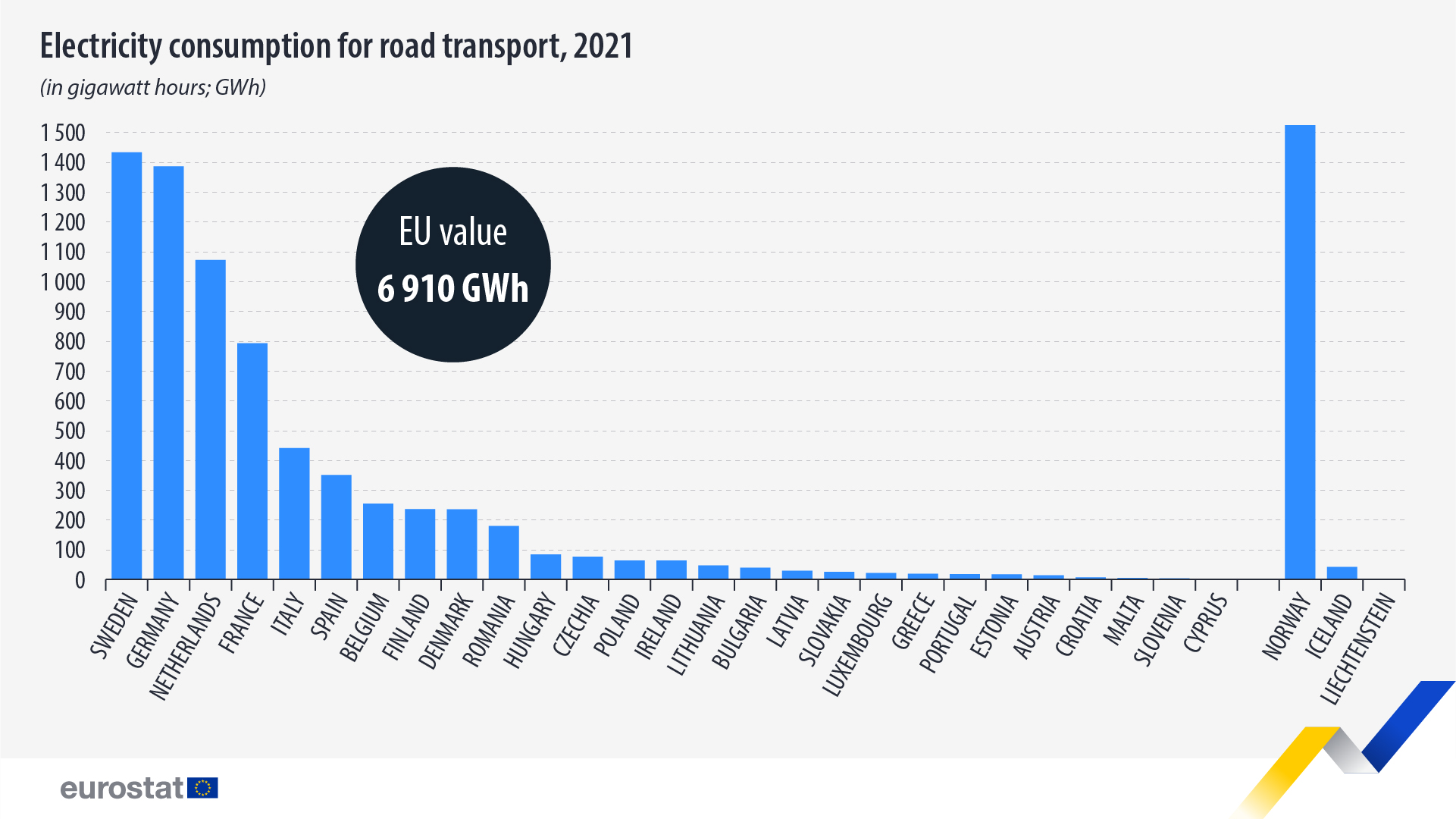Electricity demand in transportation is expected to increase in the future. In 2021, there was a substantial increase in the number of electric passenger vehicles in the EU compared with 2020 (+76%).
Source dataset: road_eqs_carpda
In terms of the electric passenger vehicle fleet, all EU members recorded an increase in 2021 compared with 2020. The largest increases were recorded in Finland (+136%), Croatia (+127%) and Italy (+122%). At the other end of the scale, Czechia (+12%) and Spain (+15%) recorded the lowest rates of increase.
In 2021, the total number of electric passenger vehicles in the EU was estimated at 1.9 million. The EU members with more than 100 thousand electric passenger vehicles were Germany (618 thousand), France (403 thousand), the Netherlands (245 thousand), Italy (118 thousand) and Sweden (110 thousand).
Source dataset: nrg_cb_e
The EU electricity consumption in road transport (which includes electricity used for electric trolley buses and to charge electric vehicles), also experienced a notable increase in 2021 compared with 2020 (+80%).
In absolute terms, electricity consumption in road transport reached 6 910 gigawatt hours (GWh) in the EU in 2021, which corresponds to 0.3% of final consumption. Across the EU countries, the highest consumption was recorded in Sweden (1 433 GWh), followed by Germany (1 386 GWh) and the Netherlands (1 071 GWh). On the other hand, Cyprus (0 GWh), Slovenia (4 GWh) and Malta (5 GWh) recorded very low electricity consumption for road transport.







